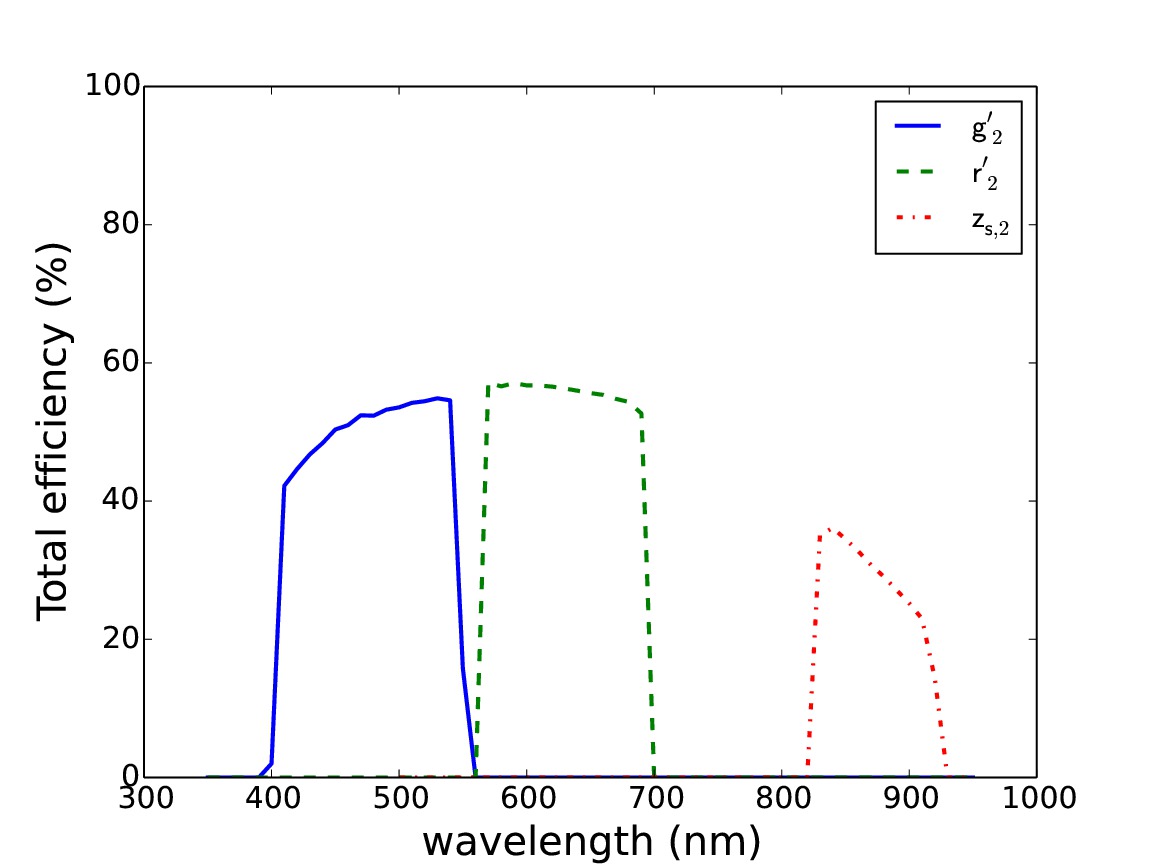- HOME >
- Observing
Observing with MuSCAT
Submitting Proposals
Specifications
| Parameter | ch.1 | ch.2 | ch.3 |
| Camera name | PIXIS 2014B_eXelon | PIXIS 2014B | PIXIS 2014B_eXelon |
| CCD format | 1024 x 1024 pixels | ||
| Pixel scale | 0.358 arcsec/pixel | ||
| Field of view | 6.1 x 6.1 arcmin2 | ||
| Filter *1 | g'2 | r'2 | z's2 |
| Gain | 1.00 e-/ADU | 1.02 e-/ADU | 1.00 e-/ADU |
| Dark current | < 0.0015 e-/ADU at -70 °C | ||
| Shutter speed | 8 ms | ||
| Readout mode (Readout time) | high (0.58 s) or low (10 s) | ||
| Readout noise (high) | 11 e- | 12 e- | 12 e- |
| Readout noise (low) | 3.9 e- | 3.8 e- | 4.2 e- |
| Full well | ~70,000 e-/pixel | ||
| Linearlity range | < 50,000 ADU for < 1% non-linearlity | ||
| Total throughput *2 | ~20% | ~28% | ~13% |
| Limiting magnitude *3 | 21.7 | 21.7 | 19.8 |
*2 Measured by observing stars, which means that it includes the reflactance of the telescope mirrors and the atmospheric transmittance.
*3 For 10 sigma detections, calculated from 10 x 60s exposure images obtained with the high readout mode on a dark night (the sky grightness was 19.9, 19.5 and 18.7 mag arcsec-2 in g, r, and z bands, respectively). Note that the readout noise of ch.3 was 24-27 e- at the time of the observation due to an electronic glitch, which has been fixed.
CCDs
Total Efficiency
 |
| Figure 1. Expected total efficiency of MuSCAT, which includes the reflectances/transmittances of dichroic mirrors, broadband anti-reflection coating on the CCD windows, filters, and quantum efficienies of the CCDs. |
Observing Mode
Forbidden Sky Area
Dec >= 75°
Dec >= 70° && Dec < 75° && HA > 2.16 hours
Dec >= 62° && Dec < 70° && HA > 1.76 hours
Dec >= 56° && Dec < 62° && HA > 1.96 hours
Dec >= 54° && Dec < 56° && HA > 3.28 hours
Dec >= 52° && Dec < 54° && HA > 5.31 hours
Observing Manual
More Information
Narita, N., 2016, JATIS, 1(4), 045001
If you have any technical questions about the instrument, please contact the MuSCAT development team via email:
muscat_core <at> abc-nins.jp
